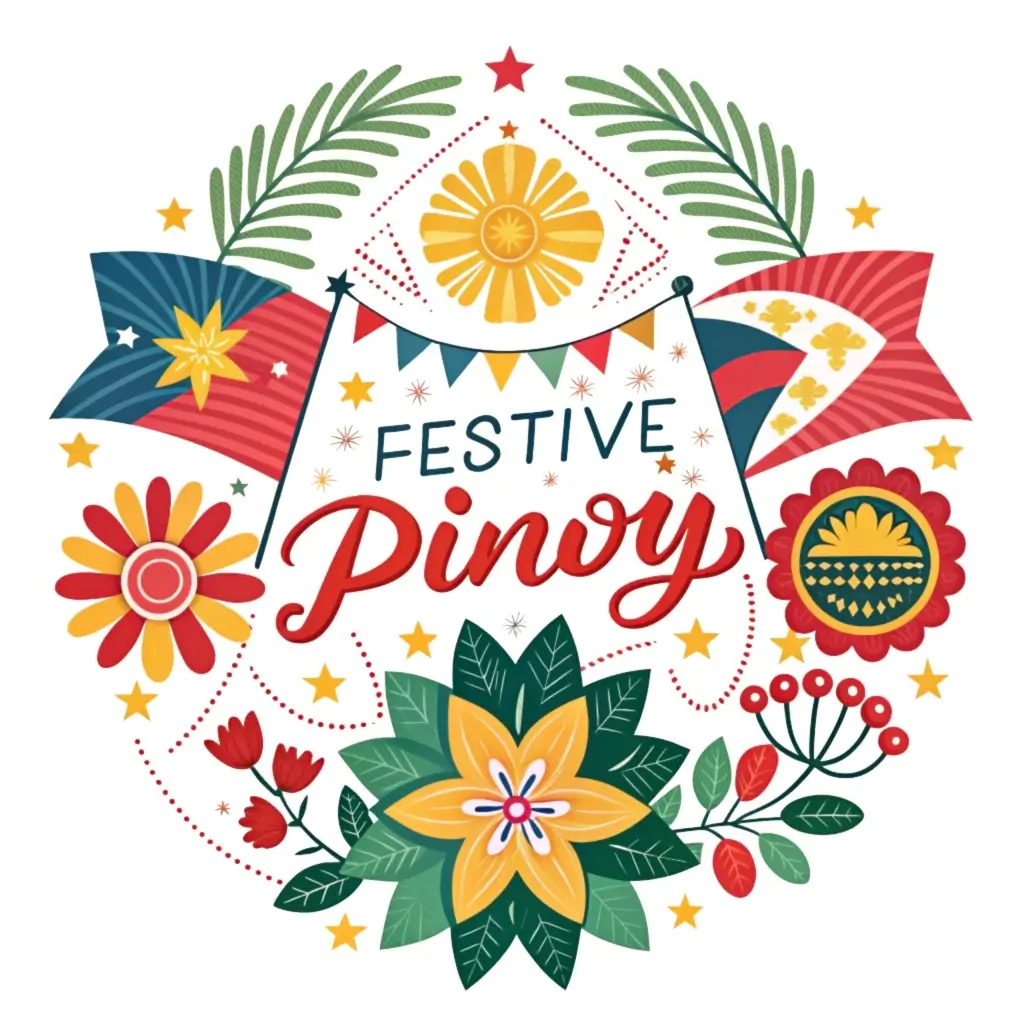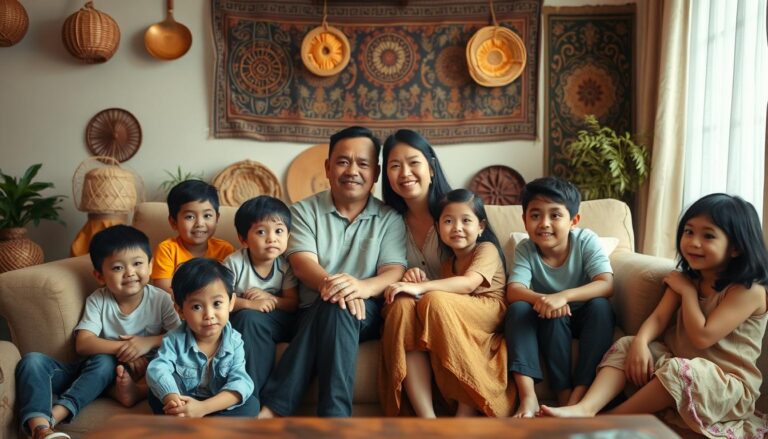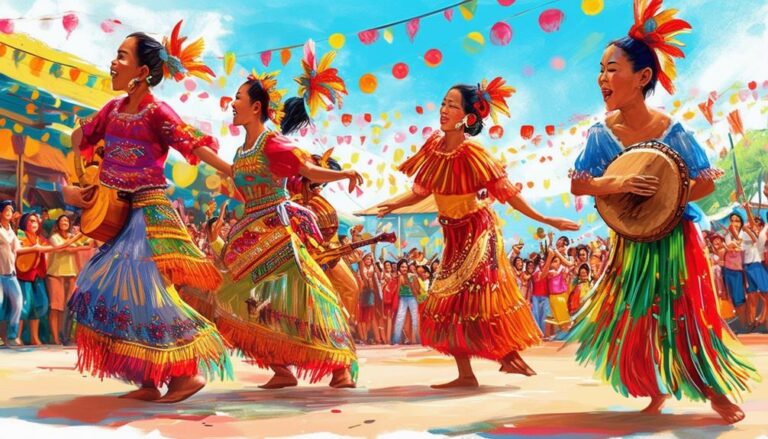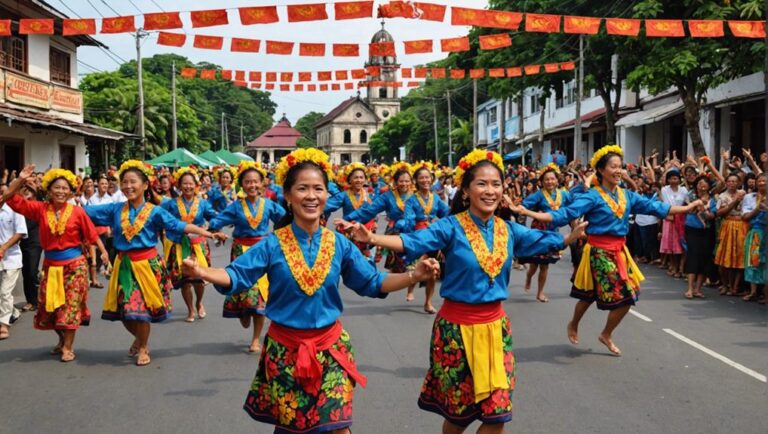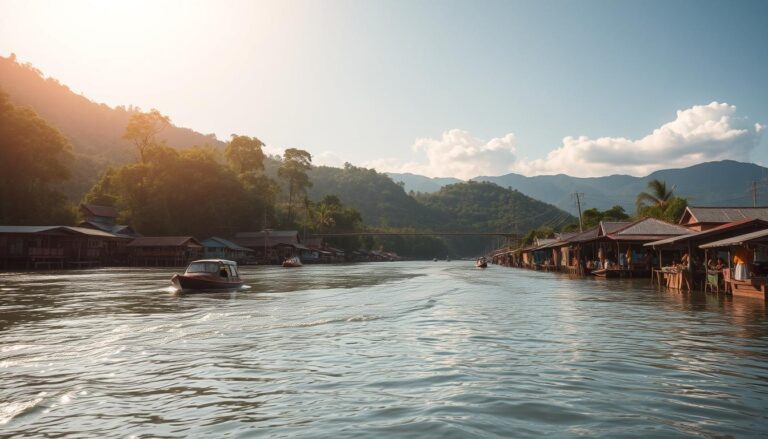Bonok Bonok Festival Surigao: Complete Guide
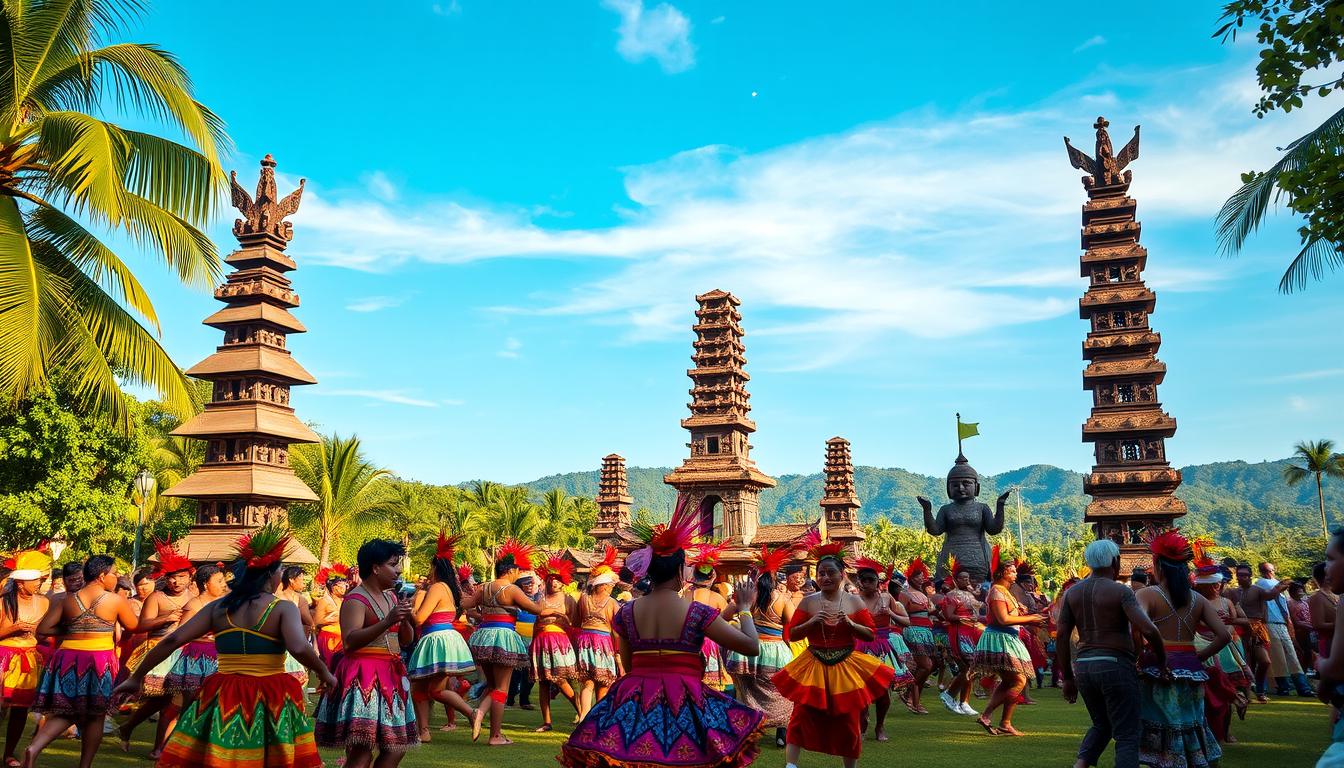
Every September 10, Surigao City comes alive with colors, music, and tradition during its most anticipated event. This 10-day celebration honors St. Nicholas of Tolentino while marking the city’s charter anniversary. Recognized as the largest cultural gathering in the CARAGA region, it blends religious devotion with indigenous heritage.
The event traces its roots to 1984, symbolizing resilience and gratitude. Its name reflects the local word for “downpour,” representing continuous blessings. After pandemic cancellations in 2020-2021, the 2022 revival brought renewed energy with the theme “Dance for Peace.”
Visitors experience unique elements like traditional Mamanwa tribal dances and elaborate street performances. The celebration also features beauty pageants, musical showcases, and religious processions. These activities highlight the region’s rich history and community spirit.
Key Takeaways
- Annual 10-day event held every September 10 in Surigao City
- Combines religious veneration with cultural preservation
- Features indigenous Mamanwa dances and street performances
- Includes beauty pageants and musical competitions
- Recognized as CARAGA region’s premier cultural celebration
Quick Facts:
- Location: Surigao City, Surigao del Norte, Philippines
- Date: September 10 annually (10-day celebration)
- Patron Saint: St. Nicholas of Tolentino
- Established: 1984
- Region: CARAGA region, Mindanao
- Significance: Largest cultural festival in CARAGA region
What is the Bonok-Bonok Festival?
The Bonok-Bonok Festival is Surigao City’s most important cultural celebration, held annually from September 1-10. This 10-day event combines Catholic religious observance honoring St. Nicholas of Tolentino with indigenous Mamanwa tribal traditions.
The festival is recognized as the CARAGA region‘s premier cultural gathering and celebrates both the city’s charter anniversary and its recovery from natural disasters.
The Origins and History of the Bonok Bonok Festival
Foundation (1984)
The Bonok-Bonok Festival was established in 1984 following the devastation of Typhoon Nitang. The community created this celebration as a symbol of resilience and renewal. The festival’s name derives from the local word “bonok,” meaning “downpour,” representing continuous blessings and hope.
Religious Heritage
Catholic influence in Surigao City dates to 1754 when Augustinian Recollects arrived. The festival honors St. Nicholas of Tolentino, the city’s patron saint, blending Catholic devotion with pre-colonial indigenous practices.
Cultural Evolution
Originally combining Mamanwa tribal rain rituals with modern traditions, the festival has evolved into a comprehensive cultural showcase. After pandemic cancellations in 2020-2021, the 2022 revival introduced the theme “Dance for Peace.”
Honoring St. Nicholas of Tolentino
The patron saint’s legacy dates to 1754, when Augustinian Recollects arrived. Today, the festival blends Catholic devotion with tribal heritage. St. Nicholas Tolentino remains central to the city’s identity.
This annual event now celebrates both history and community. From its humble beginnings, it grew into Surigao del Norte’s most iconic gathering.
Bonok Bonok Festival: A Fusion of Faith and Indigenous Heritage
Surigao City’s rich heritage comes alive in a unique blend of faith and tradition. This event is a testament to the cultural significance of the region, where Catholic devotion meets indigenous practices. The celebration is a vibrant display of unity, history, and spirituality.
The Mamanwa Tribe’s Influence
The Mamanwa tribe, known as the “first forest dwellers,” has inhabited the region for over 1,000 years. Their cultural contributions include:
- Purification rituals: Using almaciga tree resin incense to cleanse streets and instruments
- Traditional costumes: Beaded tubaw headdresses and shell anklets
- Dance choreography: Movements mimicking monsoon patterns and natural phenomena
- Cultural symbolism: Integration of ancestral practices into Catholic celebrations
Festival Name Meaning
“Bonok-Bonok Maradjaw Karadjaw” translates to “Rain Showers, All the Very Best!” in the local dialect, symbolizing both natural abundance and celebration of excellence.
“Manajaw ‘ta! Ang kalooy sa Dios maangkon ‘ta” (Let’s do good! May we receive God’s mercy) – 2016 Theme
| Element | Significance |
|---|---|
| Mamanwa Tribe | Contributions include purification rites and traditional attire. |
| Bonok-Bonok Maradjaw Karadjaw | Symbolizes rain and a celebration of quality. |
| Dance Rituals | Originated from pre-colonial practices, now part of Catholic feast. |
What to Expect at the Festival
September in Surigao City is marked by a spectacular display of culture and spirituality. This annual event brings together locals and visitors for a celebration that blends faith, tradition, and creativity. From solemn religious ceremonies to lively street performances, there’s something for everyone to enjoy.
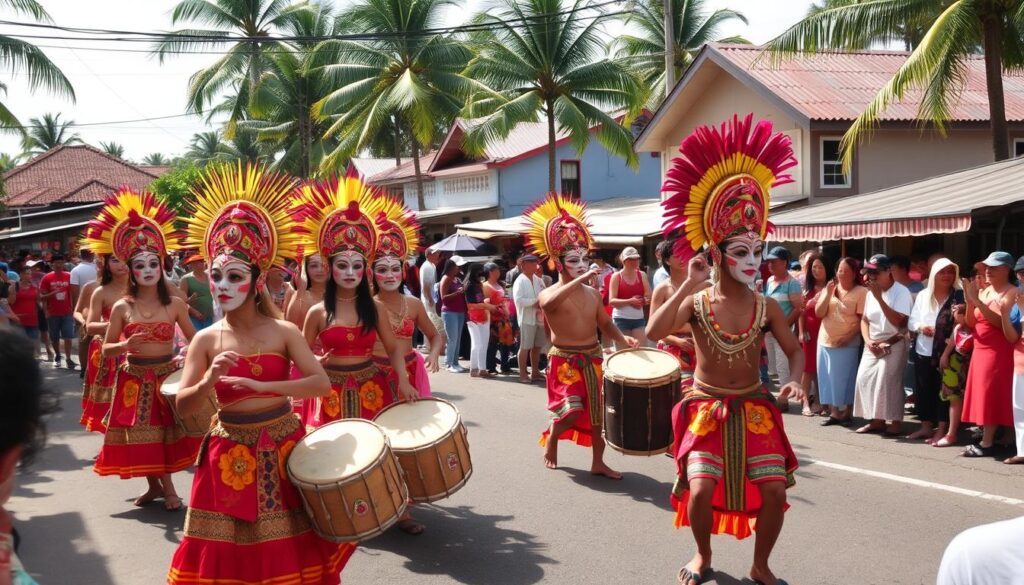
Festival Events and Activities
Religious Observances
- Novena masses: Daily masses September 1-9 at San Nicolas Cathedral
- Pontifical Mass: September 10 grand celebration
- Diana Dawn Procession: Early morning procession honoring St. Nicholas of Tolentino
- Religious ceremonies: Prayer services and spiritual activities
Cultural Competitions
- Street dancing competition: Judged on choreography, costumes, and musicality with prizes exceeding ₱500,000
- Rayna Nan Bonok-Bonok pageant: Beauty contest emphasizing cultural knowledge
- Musical showcases: Traditional and contemporary performances
- Costume contests: Including eco-friendly designs using recycled materials
Civic Celebrations
- Charter Day observance: August 31, commemorating Surigao City’s establishment in 1970
- Heritage activities: Museum exhibitions, walking tours, and historical displays
- Community parades: Featuring marching bands, floats, and civic organizations
Religious Activities and Novena Masses
The event begins with nine days of religious activities, starting on September 1. Daily masses are held at San Nicolas Cathedral, culminating in a pontifical Mass on September 10. The Diana Dawn Procession is a highlight, where devotees gather to honor St. Nicholas of Tolentino.
Street Dancing and Colorful Performances
The street dancing competition is a crowd favorite. Participants showcase their skills in choreography, costumes, and musicality. With prizes exceeding ₱500,000, the event attracts groups from across the region. The 2022 championship performance by Surigao del Norte National High School remains a memorable highlight.
The Search for Rayna Nan Bonok-Bonok Pageant
The Rayna Nan Bonok-Bonok pageant is a unique blend of beauty and cultural awareness. Contestants are judged not only on poise but also on their knowledge of local traditions. This competition evolved from the Mutya ng Surigao pageant in the 2010s, adding a deeper layer of cultural significance.
| Event | Details |
|---|---|
| Novena Masses | Daily masses from September 1-9, culminating in a pontifical Mass. |
| Street Dancing | Judged on choreography, costumes, and musicality with ₱500,000+ prizes. |
| Rayna Nan Bonok-Bonok | Cultural knowledge tests alongside traditional beauty pageant criteria. |
Celebrating Surigao City’s Charter Day
August 31 marks a pivotal moment in Surigao City’s history, celebrating its transformation into a chartered city. This annual event, known as Charter Day, honors the city’s progress and resilience. It’s a day filled with pride, reflection, and vibrant festivities.
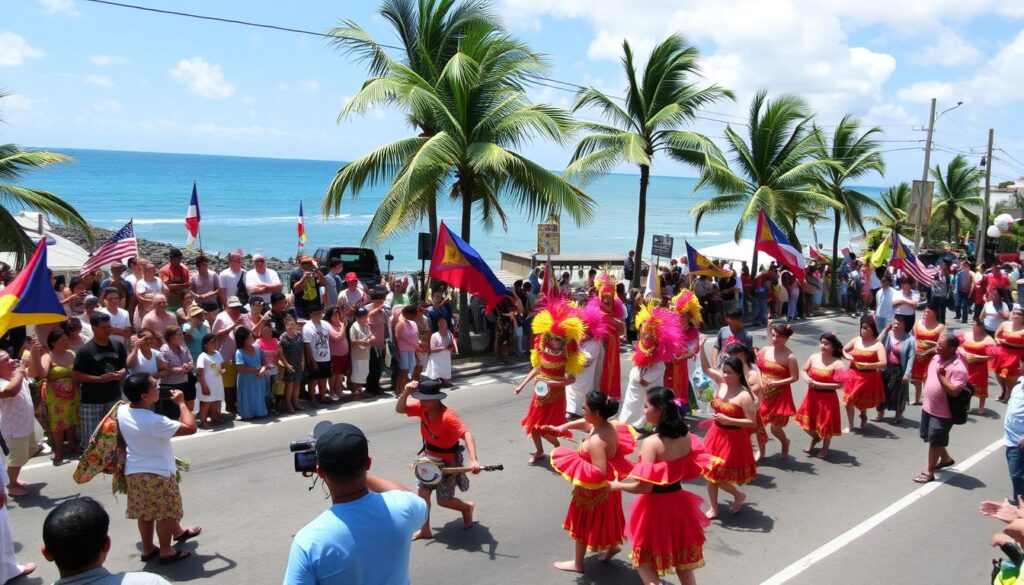
Historical Significance of August 31
On August 31, 1970, Surigao City was officially established as a chartered city under Republic Act 6134. This legislation marked a significant milestone in its development. The city’s roots trace back to the Spanish-era Bilang-bilang settlement, which evolved into a thriving urban center.
In 1978, August 31 was declared a special public holiday through Proclamation 1802. This recognition highlights the city’s importance in the region. The expansion via Republic Act 6402 further solidified its growth, incorporating Punta Bilar villages into its jurisdiction.
Parades and Civic Events
The Charter Day celebration features a variety of civic events. A grand parade showcases marching bands, historical floats, and participation from government employees. This event brings the community together, celebrating their shared heritage.
Visitors can enjoy free museum access and heritage walking tours, offering a deeper understanding of the city’s history. In 2023, the 53rd anniversary celebrations introduced augmented reality exhibits, blending tradition with modern technology.
Traditional Costumes and Dance Rituals
The vibrant culture of Surigao City shines through its traditional attire and rituals. These elements are not just visually stunning but also deeply symbolic, reflecting the region’s rich heritage. From intricate costumes to sacred ceremonies, every detail tells a story.
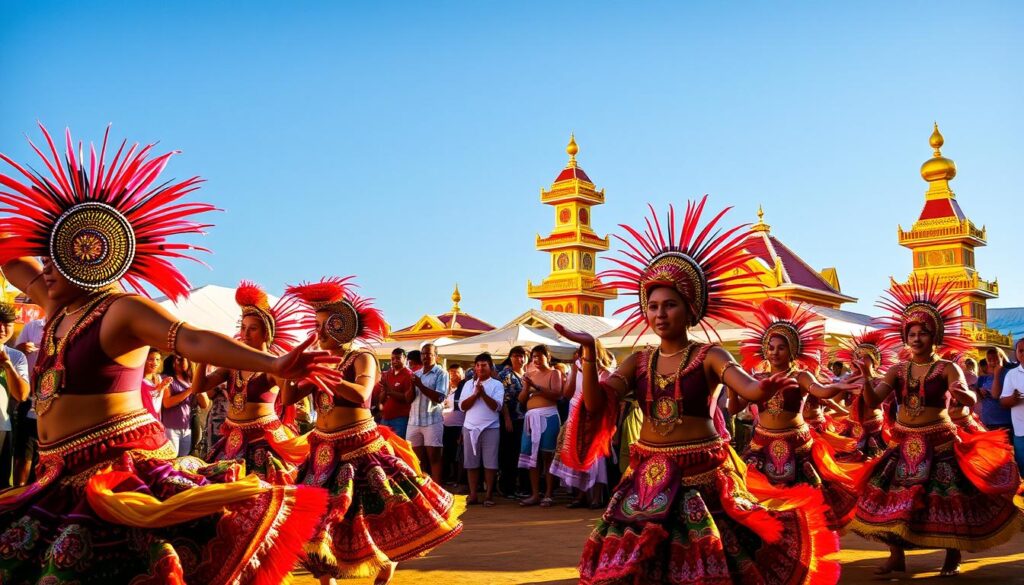
Vibrant Attire and Tribal Accessories
The colorful costumes worn during the event are a masterpiece of craftsmanship. Made from abaca fibers, mother-of-pearl, and recycled plastic beads, they take weeks to create. Feathered headdresses and beaded accessories add to their authenticity.
Each color holds meaning. Yellow represents sunshine, blue symbolizes the ocean, and red honors warrior heritage. These traditions connect the present to the past, showcasing the artistry of the Mamanwa tribe.
The Purification Ceremony
Before the dance rituals begin, a purification ceremony takes place. Almaciga tree resin incense is burned to cleanse the streets and instruments. This ritual, rooted in Mamanwa tribe customs, ensures a harmonious performance.
The choreography itself mirrors nature. Dancers start slow, mimicking the calm before a storm, then accelerate to reflect the monsoon’s intensity. This blend of movement and meaning captivates audiences every year.
“The dance is not just a performance; it’s a prayer, a celebration, and a connection to our ancestors.”
| Element | Significance |
|---|---|
| Costumes | Made from natural materials, symbolizing cultural heritage. |
| Purification | Uses incense to cleanse and prepare for the rituals. |
| Choreography | Mimics monsoon patterns, blending art with nature. |
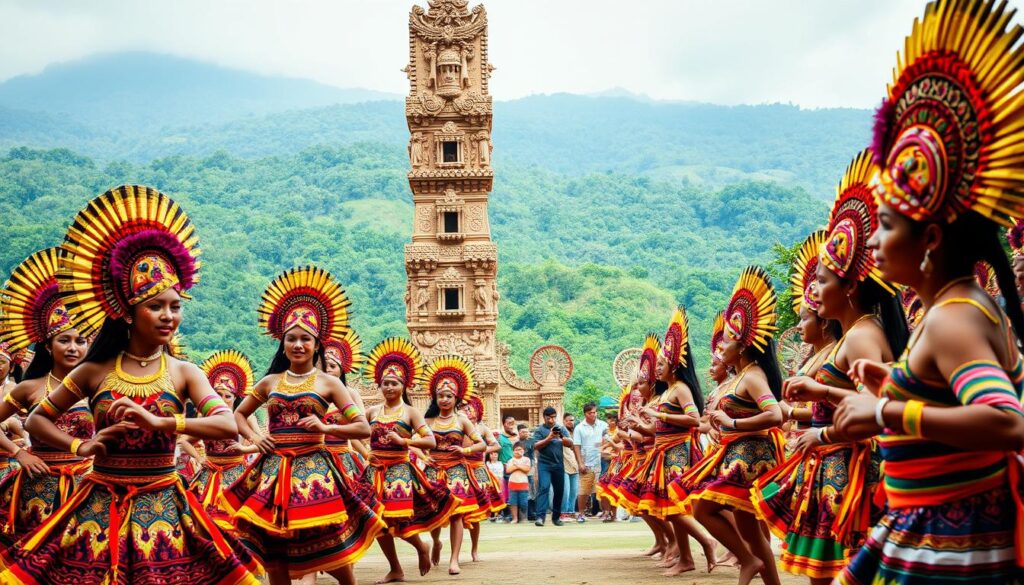
A Unifying Force for the Community
This event brings together diverse groups, fostering interfaith harmony. Muslim Lumad communities participate in secular activities, showcasing the region’s inclusivity. It’s a reminder of the power of shared traditions to bridge differences.
The economic impact is undeniable, with annual tourism revenue exceeding ₱50 million. In 2022, over 12,000 attendees, including 40% international visitors, highlighted its global appeal.
“This celebration is not just about the past; it’s about building a future rooted in unity and respect.”
- Mamanwa leadership: Tribal elders co-judge competitions, preserving authenticity.
- Economic impact: Generates ₱50M+ annually, boosting local businesses.
- Interfaith relevance: Muslim Lumad groups actively participate.
- Educational programs: Festival history integrated into school curricula.
- COVID-19 adaptation: 2021 virtual dance contest kept the spirit alive.
How to Reach Surigao City
Surigao City is a vibrant destination in the Philippines, accessible by air, sea, and land. Located in the CARAGA region, it offers multiple travel options for visitors. Whether you prefer a quick flight or a scenic ferry ride, getting to Surigao City is convenient and straightforward.
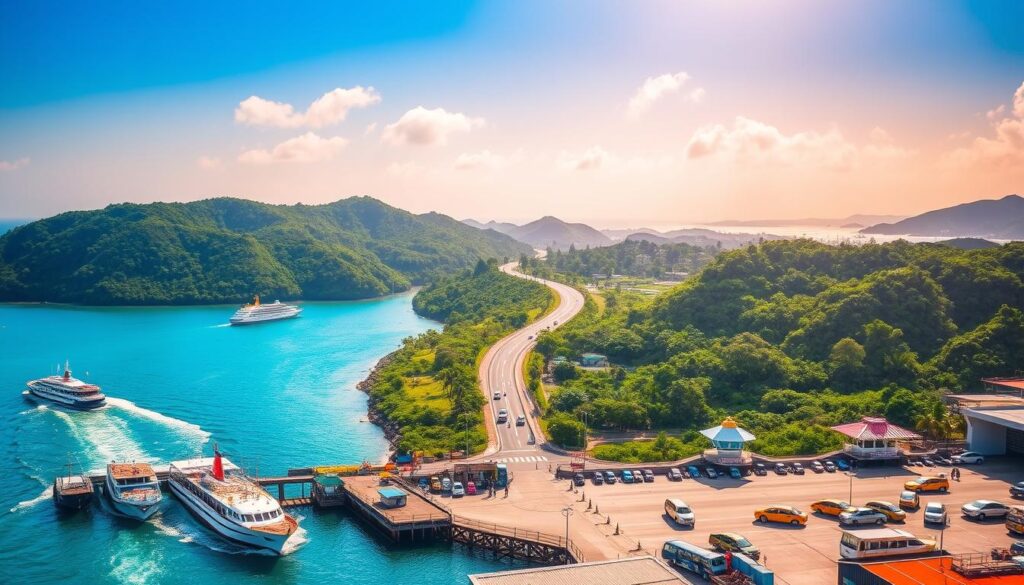
- By Air: Direct flights to Surigao Airport (SUG) from Manila or Cebu via Philippine Airlines or Cebu Pacific, taking about 2 hours from Manila.
- By Ferry: Fast crafts or ferries from Cebu (10-12 hours) or Siargao (1.5 hours) to Surigao Port; also from Leyte.
- By Bus: Long-distance buses from Manila via PITX to Surigao (24-45 hours, cheapest at $22); or shorter bus from Butuan (2 hours).
- Fly + Ferry/Bus Combo: Fly to Siargao then ferry to Surigao (7 hours total); or fly to Butuan then bus (3-4 hours total).
- By Drive: Drive from Manila (725 km, 14-16 hours) or nearby cities like Butuan via highways and ferries if needed.
For those coming from Manila, direct flights to Surigao Airport take just 1 hour and 45 minutes. Airlines like Cebu Pacific and Philippine Airlines operate daily routes. Upon arrival, jeepneys are available for transfers to downtown areas.
Travelers from Cebu can opt for overnight ferries via 2GO Travel. The route includes a stop at Liloan Port before reaching Surigao del Norte. Cabin bookings are recommended for a comfortable journey.
Overland travel is another option. UV Express vans from Davao take approximately 6 hours, passing through Agusan del Norte. Bus lines like Bachelor Express also connect Butuan to Surigao City, offering an affordable alternative.
U.S. passport holders can enjoy a 30-day visa-free entry to the Philippines. For accommodations, Hotel Tavern in downtown Surigao is a popular choice. Beachfront stays like Hayanggabon Resort provide a more serene experience.
| Travel Option | Details |
|---|---|
| Flights | Manila-Surigao, 1h45m, Cebu Pacific, PAL |
| Ferries | Cebu-Liloan-Surigao, overnight, 2GO Travel |
| Buses | Butuan-Surigao, Bachelor Express |
Places to Visit in Surigao
Places to Visit in Surigao City During the Bonok Bonok Festival
Below, I’ve curated a list of key places to visit, focusing on festival hotspots and nearby attractions. These are drawn from the festival’s highlights, making it easy to plan a trip around the event. Surigao City is compact and walkable during the festivities, but expect crowds arrive early for the best experiences!
1. San Nicolas Cathedral (Festival’s Spiritual Heart)
- Why Visit? This historic cathedral is the epicenter of the festival’s religious activities. Join the daily Novena Masses (September 1-9), the grand Pontifical Mass on September 10, or the iconic Diana Dawn Procession at sunrise, where devotees honor St. Nicholas of Tolentino with prayers and floral offerings. It’s a serene spot to witness the fusion of faith and Mamanwa purification rituals (like burning almaciga tree resin incense).
- Highlights: Architectural beauty from the Spanish colonial era (dating back to 1754 influences), plus cultural exhibits during the festival.
- Tips: Free entry; attend early morning for the procession (around 4-5 AM). Combine with a heritage walking tour on Charter Day (August 31).
- Location: Brgy. Washington, Surigao City (central downtown).
- Best Time: Throughout the festival, especially September 10.
2. Surigao City Streets and Parade Routes (Street Dancing Spectacle)
- Why Visit? The main festival action unfolds here during the street dancing competition—a high-energy parade with participants in elaborate Mamanwa-inspired costumes (feathered headdresses, beaded shell anklets, and abaca fiber outfits symbolizing nature and warrior heritage). Watch groups mimic monsoon patterns in their choreography, judged on creativity and musicality (prizes over ₱500,000!).
- Highlights: Colorful floats, marching bands, and community parades. Don’t miss the Rayna nan Bonok-Bonok beauty pageant, where contestants showcase cultural knowledge alongside traditional dances.
- Tips: Routes typically start from the city hall area and wind through main streets like Amatong St. Grab street food like grilled seafood or lechon while watching.
- Location: Downtown Surigao City (e.g., around City Hall and Rizal St.).
- Best Time: Mid-festival (September 5-8) for competitions; free to spectate.
3. Surigao City Museum and Heritage Sites (Cultural Deep Dive)
- Why Visit? Explore Surigao’s history through festival-tied exhibits on the Mamanwa tribe (the “first forest dwellers” who’ve influenced the event for over 1,000 years), Typhoon Nitang recovery (1984 origins), and Charter Day milestones (city founded August 31, 1970). Look for augmented reality displays (introduced in 2023) and walking tours of Spanish-era sites like the old Bilang-bilang settlement.
- Highlights: Artifacts from indigenous rituals, traditional costumes, and photos of past festivals. Free access during Charter Day celebrations.
- Tips: Pair with eco-friendly costume contests or Mamanwa-led workshops. It’s a quieter spot if you need a break from the parades.
- Location: Near City Hall, Surigao City.
- Best Time: August 31 (Charter Day) or anytime during the festival for pop-up exhibits.
4. Punta Bilar Area and Coastal Spots (Nature and History Blend)
- Why Visit? This historic village area (incorporated into Surigao in the 1970s) offers a glimpse into the city’s expansion and resilience themes. Stroll beaches for a relaxed vibe, or join community parades here. It’s near festival purification ceremonies, where streets are cleansed with incense.
- Highlights: Scenic ocean views, shell beaches, and ties to Mamanwa forest rituals. Nearby, spot traditional fishing boats that inspire festival dances.
- Tips: Rent a tricycle (local taxi) for a short ride from downtown (₱50-100). Ideal for sunset photos post-parade.
- Location: Southern edge of Surigao City (about 10-15 minutes from center).
- Best Time: Evenings during the festival for a peaceful contrast to urban events.
5. Hayanggabon Resort (Beachfront Relaxation)
- Why Visit? After a day of dancing and processions, unwind at this serene beach resort. It’s a great base for festival-goers, with ties to the region’s oceanic symbolism (blue costumes in dances represent the sea). Enjoy bonfires or stargazing, evoking the festival’s “downpour of blessings” theme.
- Highlights: White-sand beaches, swimming, and fresh seafood dining. Some resorts host mini cultural shows during September.
- Tips: Book in advance (rooms from ₱2,000/night); it’s 20-30 minutes from the city center. U.S. passport holders get 30-day visa-free entry, perfect for a multi-day stay.
- Location: Brgy. Sabang, Surigao City (beachfront, north side).
- Best Time: Post-festival (September 11+) for recovery, or evenings during events.
Nearby Day Trips from Surigao City
If you have extra time, extend your festival visit with these accessible spots (all within 1-7 hours):
- Siargao Island (1-hour flight + 1-hour ferry from Surigao Airport): World-famous for surfing at Cloud 9. Fly in via Cebu Pacific (from Manila, 1h45m to Surigao, then connect). Great for eco-adventures tying into Mamanwa nature themes.
- Butuan City (2-3 hours by bus via Bachelor Express, ₱200-300): Explore the Balangay Shrine Museum for ancient boat artifacts, linking to Surigao’s maritime heritage.
- Britania Islands (1-hour south): Pristine islets island-hopping tours, ideal for a nature escape reflecting the festival’s monsoon-inspired dances.
Practical Tips for Your Visit
- Getting There: Fly direct from Manila (1h45m, ₱2,000-4,000 via Cebu Pacific or PAL) to Surigao Airport. From Cebu, take an overnight ferry (2GO Travel, 8-10 hours, cabins from ₱1,500). Buses from Butuan (2 hours) or Davao (6 hours) are budget-friendly.
- When to Go: Align with September 1-10 for the full festival; book flights/hotels early as it draws 12,000+ visitors (40% international).
- Budget: Festival entry is free; expect ₱500-1,000/day for food/transport. Economic boost to locals means authentic experiences!
- Sustainability Note: Support eco-costume contests and Mamanwa artisans—buy beaded accessories as souvenirs.
Conclusion
The Bonok Bonok Festival in Surigao City is a vibrant fusion of faith, indigenous heritage, and community spirit, honoring St. Nicholas of Tolentino and the Mamanwa tribe’s ancient rituals. From street dances and purification ceremonies to beauty pageants and processions, it celebrates resilience post-Typhoon Nitang and the city’s charter anniversary as CARAGA’s premier cultural event.
Plan your visit for September 1-10, book flights, ferries, or stays early to immerse in this unforgettable 10-day spectacle of color, music, and unity.
